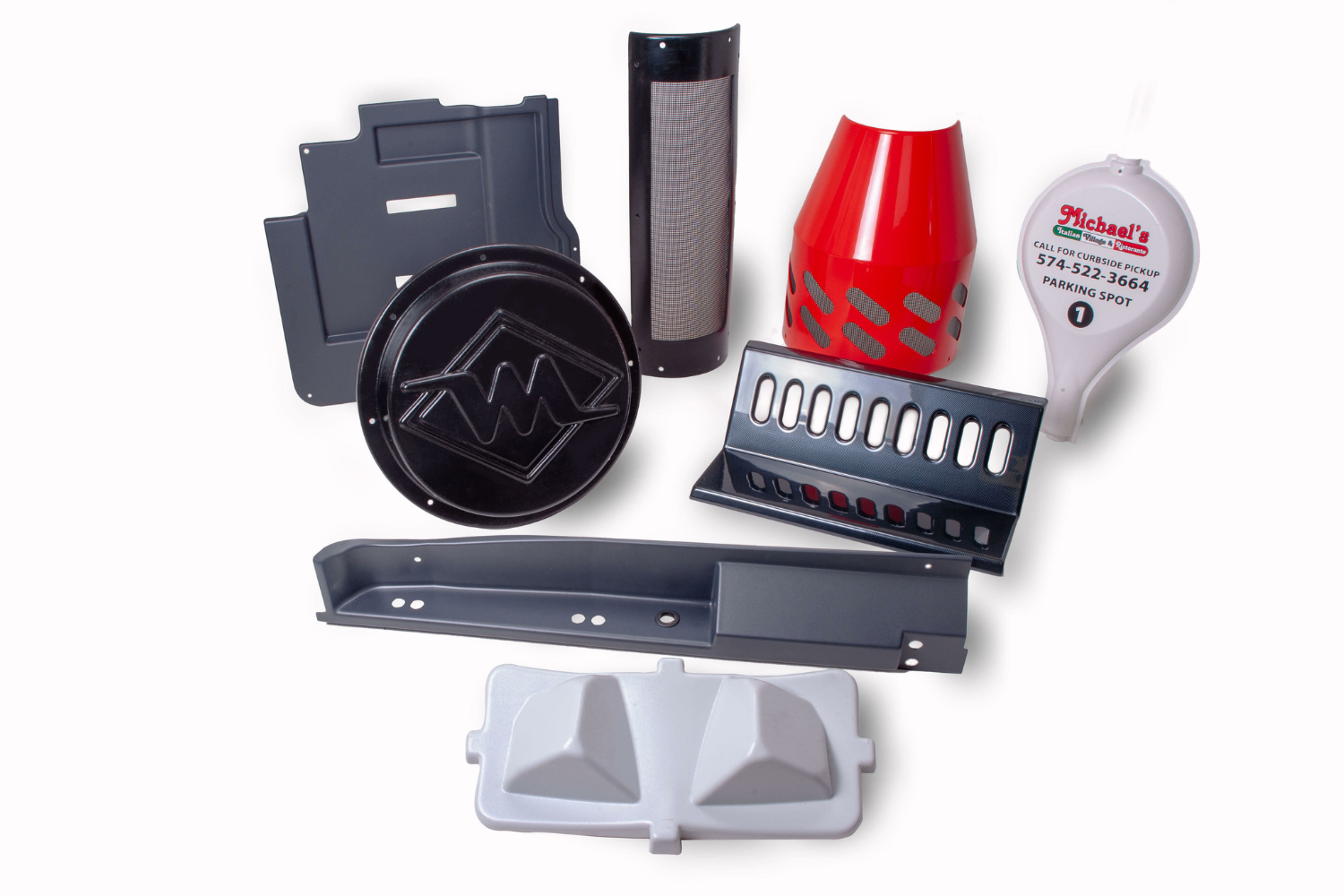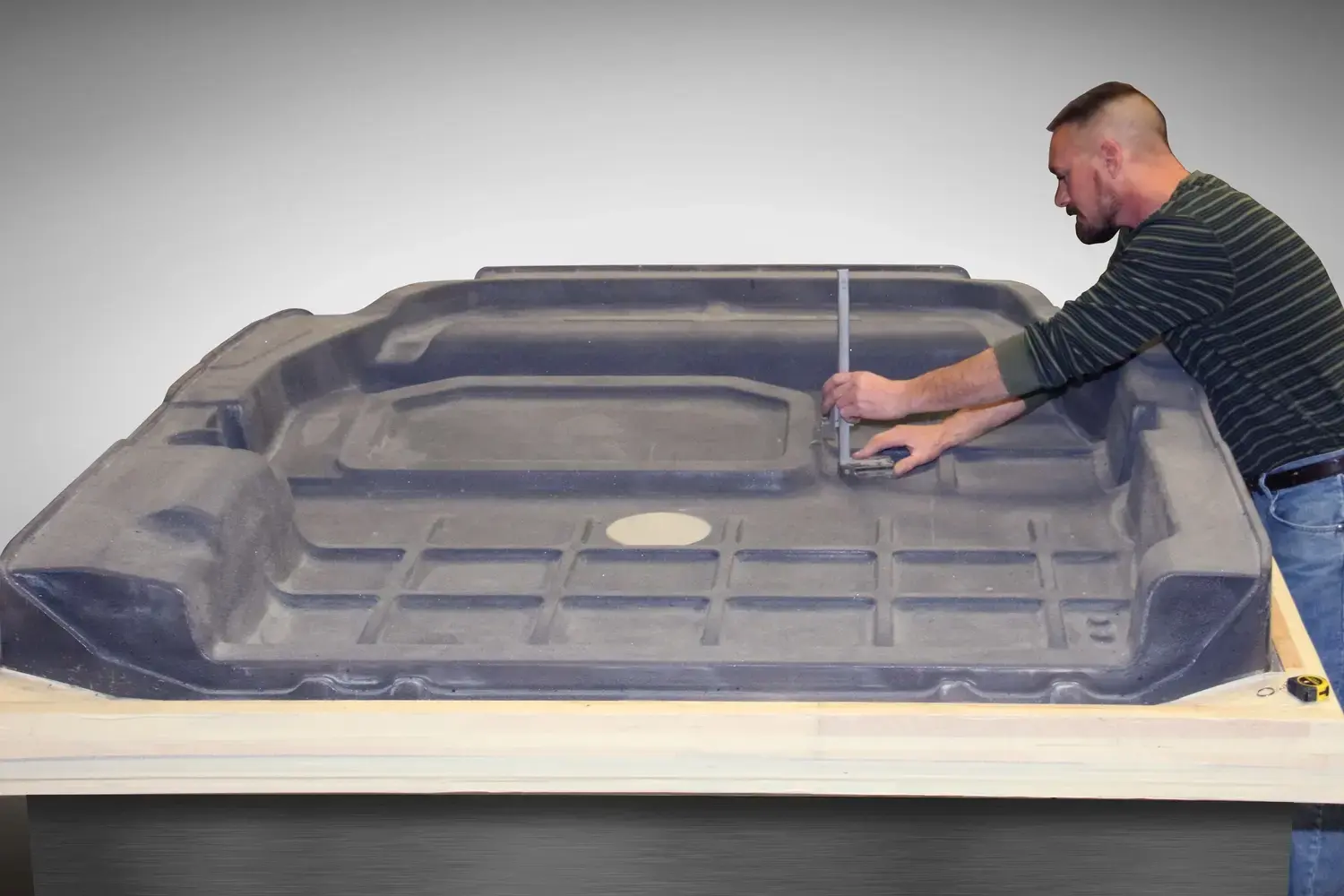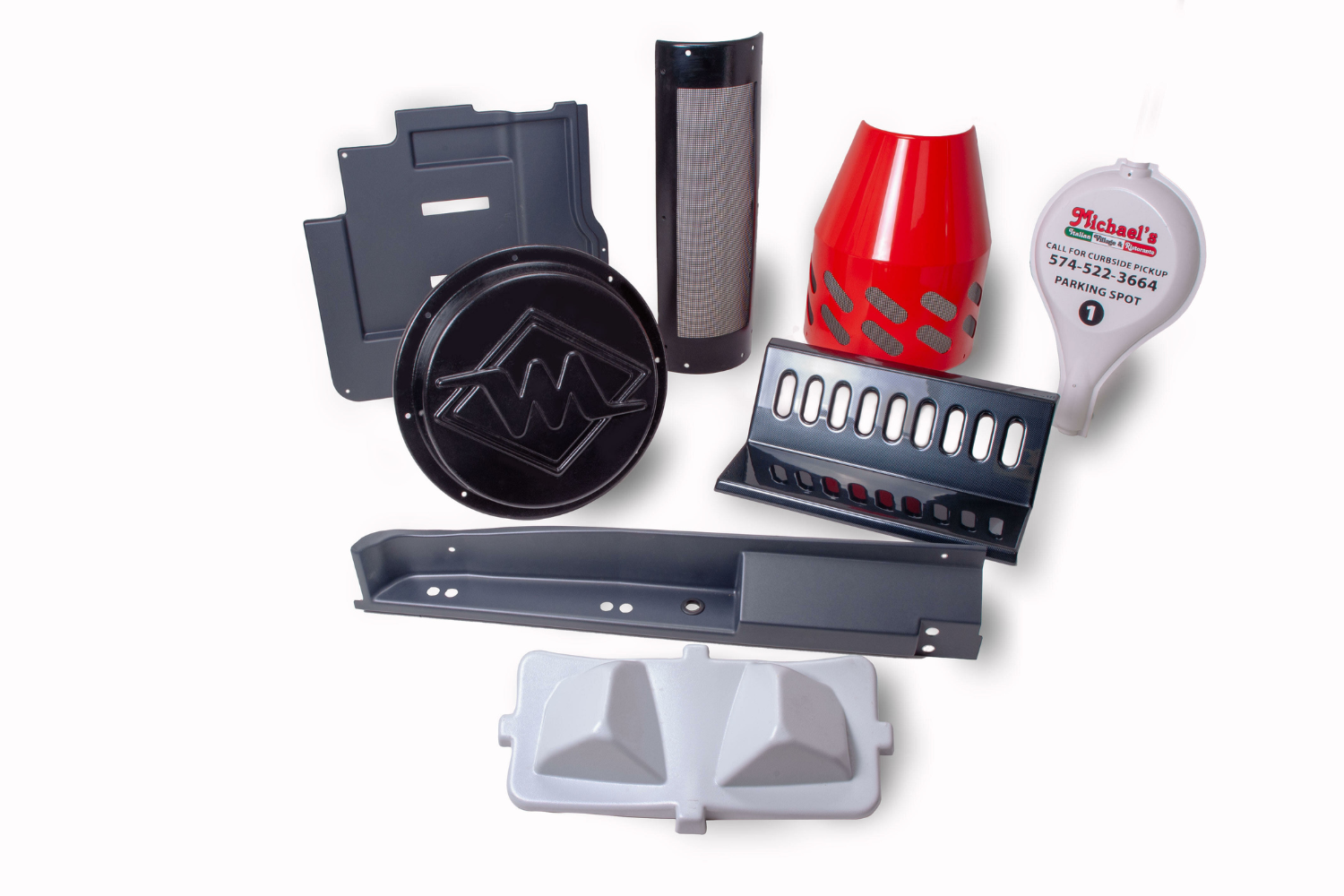Converting Metal Stamping Designs to Thermoforming: Engineering Considerations
The transition from metal stamping to thermoforming represents one of the most significant opportunities for cost reduction and design enhancement in modern manufacturing. For engineers and project managers evaluating this conversion, the process requires careful consideration of material properties, design modifications, and manufacturing constraints that differ fundamentally between these two processes.
Understanding the Core Differences
Metal stamping involves the high-pressure forming of flat metal sheets using matched die sets. In contrast, thermoforming utilizes heat and vacuum or pressure to shape thermoplastic sheets over single-sided molds. This fundamental difference in approach creates both opportunities and challenges that must be addressed during the conversion process.
The economics alone often justify the investigation. Thermoforming tooling typically costs 50 to 90 percent less than metal stamping dies, with lead times reduced from 12 to 16 weeks to 6 to 8 weeks. Production setup times are significantly shorter, making thermoforming particularly attractive for low- to medium-volume runs where metal stamping economics become prohibitive.
Material Selection and Performance Comparison
When converting from metal to plastic, selecting the appropriate thermoplastic material becomes critical to maintaining or improving part performance. Modern engineering thermoplastics can often match or exceed the performance characteristics required for many applications previously reserved for metal components.
Polypropylene and polyethylene offer excellent chemical resistance and impact strength at roughly one-third the weight of steel. ABS offers superior impact resistance and good dimensional stability, making it an ideal material for structural applications. For parts requiring transparency or superior impact resistance, polycarbonate offers glass-like clarity with impact strength significantly higher than that of traditional materials.
The weight advantage cannot be overstated. Commonly used plastics are typically two to three times lighter than aluminum and up to four times lighter than steel. In applications where weight reduction directly impacts performance or operating costs, this advantage alone can justify the conversion. A 15 percent weight reduction in vehicle components, for example, can translate to measurable fuel efficiency improvements.
Design Modification Requirements
Converting metal stamping designs to thermoforming requires thoughtful modification of part geometry to accommodate the different forming process. Metal parts often feature sharp corners and tight bends that are impractical or impossible to achieve through conventional thermoforming methods. The heat-forming process naturally creates radii and flowing transitions that must be incorporated into the design.
Draft angles become essential in thermoforming, typically requiring a minimum of 1-3 degrees to ensure proper part release from the mold. While this may seem restrictive, these draft requirements often lead to improved part aesthetics and can eliminate the need for secondary operations required in metal fabrication.
Undercuts present challenges in thermoforming that don't exist in metal stamping. Complex geometries may require split-line tooling or secondary trimming operations. However, the design flexibility of thermoforming often allows for the consolidation of multiple metal components into a single formed part, reducing assembly complexity and potential failure points.
Wall thickness considerations differ significantly between the two processes. While metal stamping maintains uniform material thickness throughout the part, thermoforming can create variable wall thickness that must be managed through careful tool design and process control. Areas that contact the mold first will be thicker, while deep-drawn sections may experience thinning that requires compensation in the original sheet thickness.
Tooling Strategy and Cost Optimization
The tooling approach for thermoforming offers significantly more flexibility than metal stamping, but this flexibility requires strategic planning to optimize both cost and performance. Unlike metal stamping, which requires matched male and female dies, thermoforming typically uses single-sided tooling, dramatically reducing tool complexity and cost.
For prototype and low-volume applications, wooden or composite tooling can be manufactured in a matter of days rather than weeks, allowing for rapid design validation and modification. This approach enables iterative design improvement at a fraction of the cost associated with metal die modifications.
Production tooling materials should be selected based on expected volume and part complexity. Aluminum tooling offers excellent heat transfer, enabling faster cycle times and superior part quality, making it ideal for medium- to high-volume production. Steel tooling, although more expensive, offers the longest life for extremely high-volume applications.
Temperature control becomes crucial for consistent part quality. Water-cooled aluminum tooling can reduce cycle times compared to non-temperature-controlled alternatives, significantly improving production throughput and part consistency.
Process Considerations and Quality Control
The thermoforming process requires different quality control measures compared to metal stamping. Material heating profiles must be carefully controlled to ensure uniform temperature distribution across the sheet before forming. Inadequate heating leads to incomplete forming or stress concentrations, while overheating can cause material degradation or excessive thinning.
Vacuum and pressure systems require regular calibration to maintain consistent forming forces. Unlike metal stamping, where the forming force is mechanically controlled, thermoforming relies on atmospheric pressure differentials that can vary with environmental conditions and system maintenance.
Part cooling becomes a critical factor in both cycle time and part quality. Proper cooling fixture design prevents warpage and ensures dimensional stability. For complex geometries, cooling may need to be controlled in zones to prevent differential shrinkage that could cause distortion.
Read the case study of how one of our customers converted from metal stamping to thermoforming.
Economic Analysis and Decision Framework
The economic advantages of thermoforming become most apparent when analyzing total project costs rather than individual part prices. While the per-piece material cost of thermoplastics may exceed that of metal, the significantly lower tooling costs, reduced secondary operations, and elimination of finishing requirements often result in lower total program costs.
Break-even analysis typically favors thermoforming for production volumes below 3,000 to 5,000 parts annually. Beyond these volumes, the economic advantage depends heavily on part complexity, secondary operation requirements, and the specific metal fabrication process being replaced.
The speed advantage of thermoforming often provides additional economic benefits through faster time-to-market and reduced inventory requirements. The ability to modify tooling quickly enables design optimization throughout the product lifecycle, a process that's often cost-prohibitive with metal stamping tooling.
Implementation Strategy
Successfully converting from metal stamping to thermoforming requires a systematic approach that begins with a thorough analysis of existing part requirements and constraints. The first step involves a detailed evaluation of current part specifications, including dimensional tolerances, mechanical properties, environmental requirements, and aesthetic considerations.
Prototype development should commence early in the process, utilizing rapid tooling methods. This allows for validation of material selection, forming process parameters, and dimensional accuracy before committing to production tooling. Multiple material options should be evaluated through functional testing to ensure optimal performance characteristics.
Collaboration with thermoforming specialists during the design phase proves invaluable. Their expertise in material behavior, tool design, and process optimization can identify potential issues before they become costly problems. This partnership approach often reveals design improvements that weren't apparent in the original metal part.
The conversion process presents an opportunity to reimagine part design rather than simply replicate existing metal geometry. Thermoforming's design flexibility allows for integration of features like logos, textures, and mounting bosses directly into the forming process, potentially eliminating secondary operations required in metal fabrication.
Manufacturing process validation should include comprehensive testing of mechanical properties, environmental resistance, and long-term durability. While thermoplastics offer excellent performance characteristics, their behavior under specific application conditions must be verified through appropriate testing protocols.
Long-term Considerations
The decision to convert from metal stamping to thermoforming should include evaluation of long-term factors beyond immediate cost savings. Material availability and price stability, tooling life expectancy, and production scalability all influence the total cost of ownership over the product lifecycle.
Sustainability considerations increasingly influence material selection decisions. Most thermoforming materials offer excellent recyclability, allowing for the incorporation of significant percentages of recycled content without compromising performance. End-of-life disposal or recycling requirements may favor thermoplastics in applications where environmental impact is a consideration.
Technological advancements in both materials and processing equipment continue to expand the capabilities of thermoforming. New material formulations offer improved performance characteristics, while process innovations enable the creation of more complex geometries and tighter tolerances that were previously unattainable.
The conversion from metal stamping to thermoforming represents more than a simple material substitution. It's an opportunity to optimize part design, reduce manufacturing complexity, and improve product performance while achieving significant cost savings. Success requires careful attention to material selection, design modification, and process optimization, but the potential benefits make this conversion an attractive option for many applications previously considered exclusive to metal fabrication.
For engineers and project managers evaluating this transition, the key lies in understanding both the limitations and opportunities that thermoforming presents. With proper planning and execution, the conversion can deliver superior parts at lower cost with improved manufacturing flexibility that supports long-term product success.




